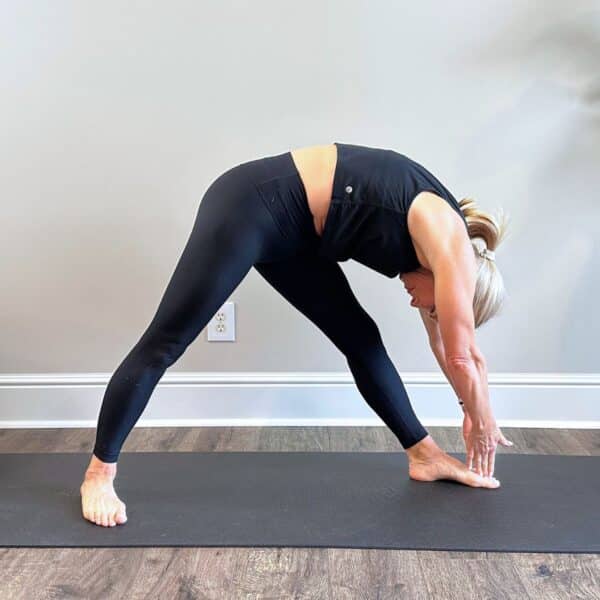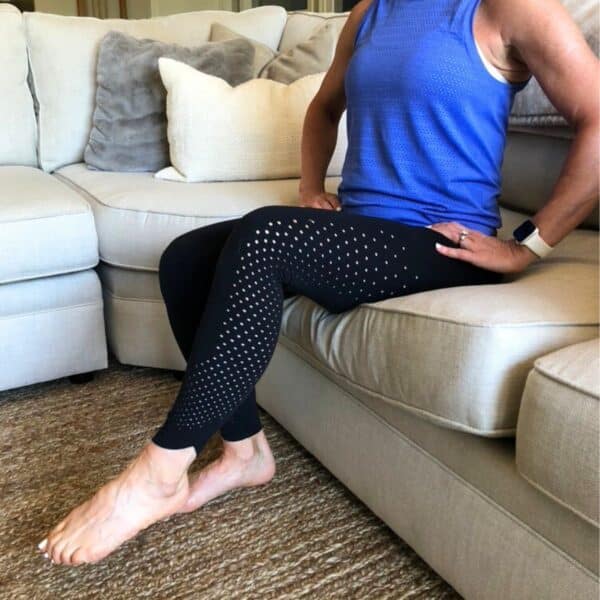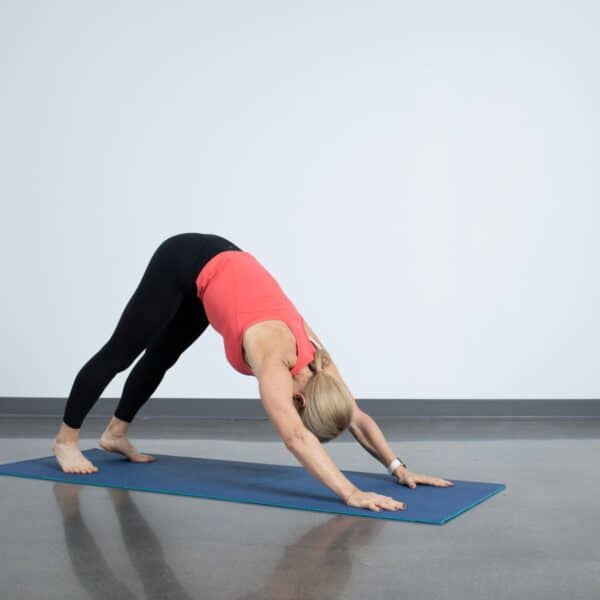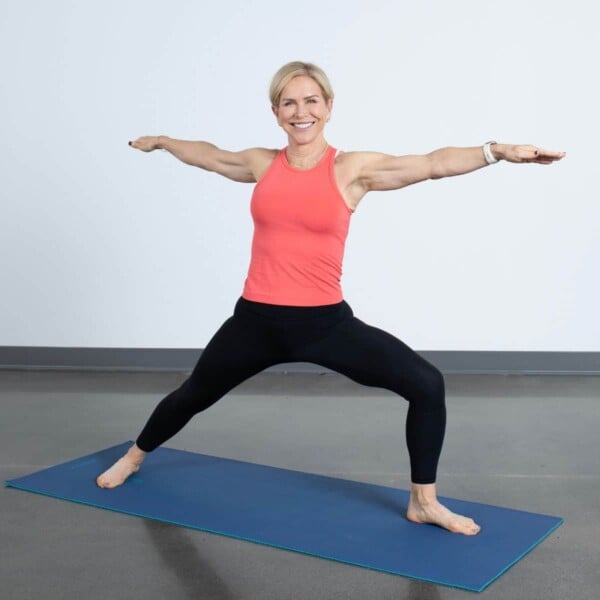This post contains affiliate links. Please see our disclosure policy.
The lateral lunge, also known as a side lunge, is an effective lower body exercise that strengthens your quads, glutes and hamstrings while also targeting both the inner and outer thighs. By moving in a side-to-side motion rather than the traditional lunge motion of forward and back, you recruit your thigh muscles and also work on your balance and stability.
This is a great exercise to add to your workouts to tone your lower body, improve your balance, and get leaner legs.
Follow these instructions to get started:
- Start standing with legs slightly wider than shoulder-distance apart and toes pointed forward.
- Shift your body weight to one leg bending the knee until it reaches a 90-degree angle and the other leg is straight. Glutes are pressing back behind you.
- Return to center and switch sides.
Benefits of Lateral Lunges
There are many reasons you should incorporate side lunges into your workouts. Here are just a few:
Work Your Outer Thighs
There are so many leg exercises available including dozens of different types of squats and just as many lunges. Side lunges are unique in the way they tone and shape your outer thighs, or abductors. Many people become frustrated with their outer thighs when it seems nothing works to eliminate those extra pockets of fat, or “saddlebags.” Lateral lunges will help decrease the appearance of saddlebags because they activate those outer thigh muscles directly.
Work Your Glutes
Although you are lunging sideways, the weight of your body is sitting back into your glutes. Lateral lunges help tone and shape your booty and give you a nice, strong and shapely backside.
Get Your Heart Pumping
The side-to-side motion of the lateral lunge gets your blood moving and your heart pumping. You’ll reap the cardio benefits of side lunges, especially if you add extra weights or resistance. Time for a calorie burn? Side lunges do the trick.
Improves Balance And Stability
Since you are moving your body in a side-to-side motion rather than the traditional forward and back, you add muscle balance around the hip and knee joints, which helps you prevent possible future injuries. In addition to preventing future injuries, this is a back-friendly exercise because this lower body workout requires you to keep your back straight and your chest lifted.
Variations
Check out these variations to get even more out of your workout!
Stability Ball Side-to-Side Lunges

Stability ball side-to-side lunges is a unique lower body exercise that strengthens the legs and glutes while using the ball for upper body stability and to promote good posture. A stability ball is a great tool for balance, stability and so much more.
- Stand tall and hold ball between hands in front of you.
- Step right foot out wide and bend right knee to a 90-degree angle.
- Push off right foot to step back in.
- Step left foot out wide and bend left knee to a 90-degree angle.
- Push off left foot to step back in.
Alternating Side Lunge Front Raise
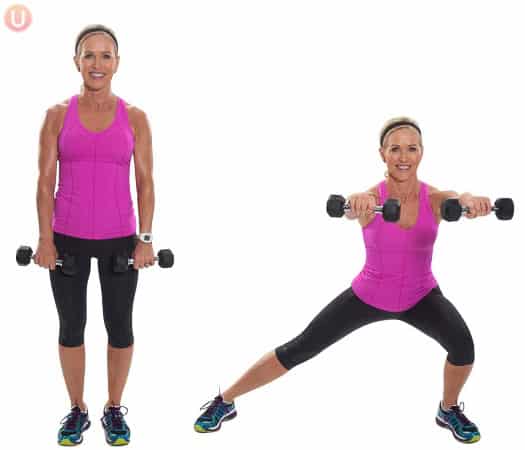
Like the standard lunge, the side lunge is a great way to tighten your glutes and legs. What’s different about this lunge is the lateral movement, which incorporates both inner and outer thighs along with the usual use of glutes and quadriceps muscles. Using all of these muscles together helps stabilize the pelvis, which helps improve core strength.
In addition, lateral moves that strengthen inner and outer thighs also help strengthen the muscles that surround the knee joint. Combined with a front raise, which strengthens the shoulders and the chest muscles, this a total body exercise!
- Start with feet hip distance apart and dumbbells resting in front of legs with your arms long.
- Step out with left leg into a side lunge bringing the knee into a 90-degree angle but keeping the right leg straight. As you lower into the lunge, lift arms to shoulder height in a front raise.
- Step back to center, slowly lowering arms, and repeat on the other side.
Other Exercises Similar To Lateral Lunges
If you like the idea of shaping and sculpting your thighs, here are a few more exercises you’ll want to try:
- How To Do A Plie Squat
- How To Do Resistance Band Side to Side Squat
- How To Do Stability Ball Side Leg Lift
Lateral Lunge FAQs
Lateral lunges work your glutes, quads, and hamstrings. While traditional lunges also work these same muscles, a lateral lunge gives the bonus of tackling both your outer and inner thighs, also known as abductor and adductors.
Most exercises, including lateral lunges, will generally burn about 100 calories for every 10 minutes you are working. Just keep your intensity up and make sure you are breathing through your mouth.
